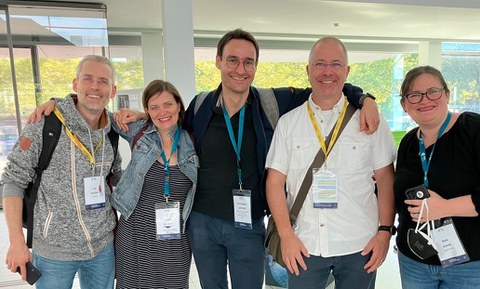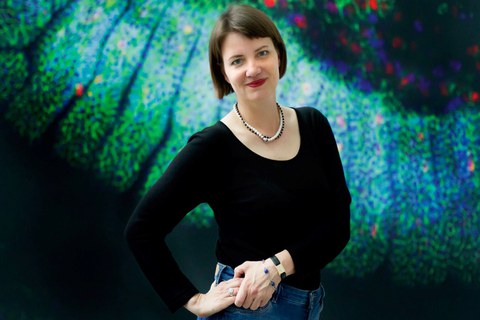Nov 18, 2024
Making scientific images easy to understand and to compare: Early Career Einstein Foundation Award for Helena Jambor and Christopher Schmied
This year’s Early Career Einstein Award has been awarded to Dr. Helena Jambor (University of Applied Sciences of the Grisons, Chur, Switzerland / TUD Dresden University of Technology) and Dr. Christopher Schmied (Leibniz-Institut für Molekulare Pharmakologie, Berlin) for their project “PixelQuality – Best practices for publishing images.” The prize, endowed with EUR 100,000, will be conferred on the two scientists in March 2025.
Every year, more than one million publications are released in the life sciences. About a third of these include microscopic images such as cells or tissues. These images provide critical evidence of scientific findings. However, if they are not explained in detail, other researchers may be unable to understand how the images were made nor to create comparable images. There is also the risk that they have been altered or manipulated, which can lead to ambiguities or errors.
Helena Jambor, a biologist with a doctorate in molecular biology, has been aware of this problem since the beginning of her scientific career, first at the Max Planck Institute of Molecular Cell Biology and Genetics and later at the Faculty of Medicine of TU Dresden. Over ten years ago she began to look closer at the comprehensibility and reliability of microscopic images – initially on a voluntary basis. “As part of my work, I had to capture a large number of pictures under the microscope. It was, of course, important to me that they could be understood by others,” explains Jambor. However, there were not any guidelines or standards for the publications and reproducibility of microscopic images.
As part of the global initiative Quality Assessment and Reproducibility for Instruments and Images in Light Microscopy, a working group of more than 50 people led by Jambor and her co-author Christopher Schmied, developed communication guidelines, especially for microscopic images and image data.
“We felt it was essential to involve researchers in the development of the guidelines, as they know best what quality criteria are decisive for their work. We were able to reach a broad consensus encompassing researchers from many of the world's leading life science institutes,” says Jambor. The guidelines were published in 2024 in the Nature Methods journal and represent an important step towards improving the reliability of visual data in scientific literature. “The specifications make it possible to publish images and results from image analysis that fulfill high quality standards, are replicable, and provide a good basis for further research projects,” adds Christopher Schmied.

Dr. Helena Jambor and Christopher Schmied (middle) with colleagues.
However, Jambor and Schmied believed their work is not yet complete. They founded PixelQuality with the aim of making their work known via publicly available teaching materials, training, and partnerships with scientific publishers. In addition, the increasing use of artificial intelligence in the creation, processing and analysis of microscopic images calls for clear guidelines. PixelQuailty is working on creating these, so that scientific images remain reliable.
“Research data are only of value to society if they are accessible and comprehensible. Quality standards are an integral foundation for this. We want to help increase confidence in scientific data,” says Jambor, summing up her commitment. She is especially grateful to the Habilitation Funding Program for Women at the Faculty of Medicine at TU Dresden and to the support of her supervisor, Prof. Martin Bornhäuser, Professor of Stem Cell Transplantation at TUD and Director of the University Hospital Dresden, who gave her the necessary freedom to pursue this important work.
Einstein Foundation Award: https://award.einsteinfoundation.de/
Initiative Quality Assessment and Reproducibility for Instruments and Images in Light Microscopy
The initiative was launched in April 2020 and has almost 550 members worldwide, including experts in image science and image analysis, microscope manufacturers and scientific publishers. The members are involved in 15 subject-specific working groups. Dr. Helena Jambor and Dr. Christopher Schmied lead the “Image visualization and analysis” working group, which is responsible for developing the publication guidelines for microscopic images as described in this article.
Publication:
Schmied, C., Nelson, M.S., Avilov, S. et al. Community-developed checklists for publishing images and image analyses. Nat Methods (2023). https://doi.org/10.1038/s41592-023-01987-9
Contact:
Anne-Stephanie Vetter
Staff Unit Public Relations of the Carl Gustav Carus Faculty of Medicine
of TUD Dresden University of Technology
+49 351 458 17903
anne-stephanie.vetter@tu-dresden.de
www.tu-dresden.de/med

